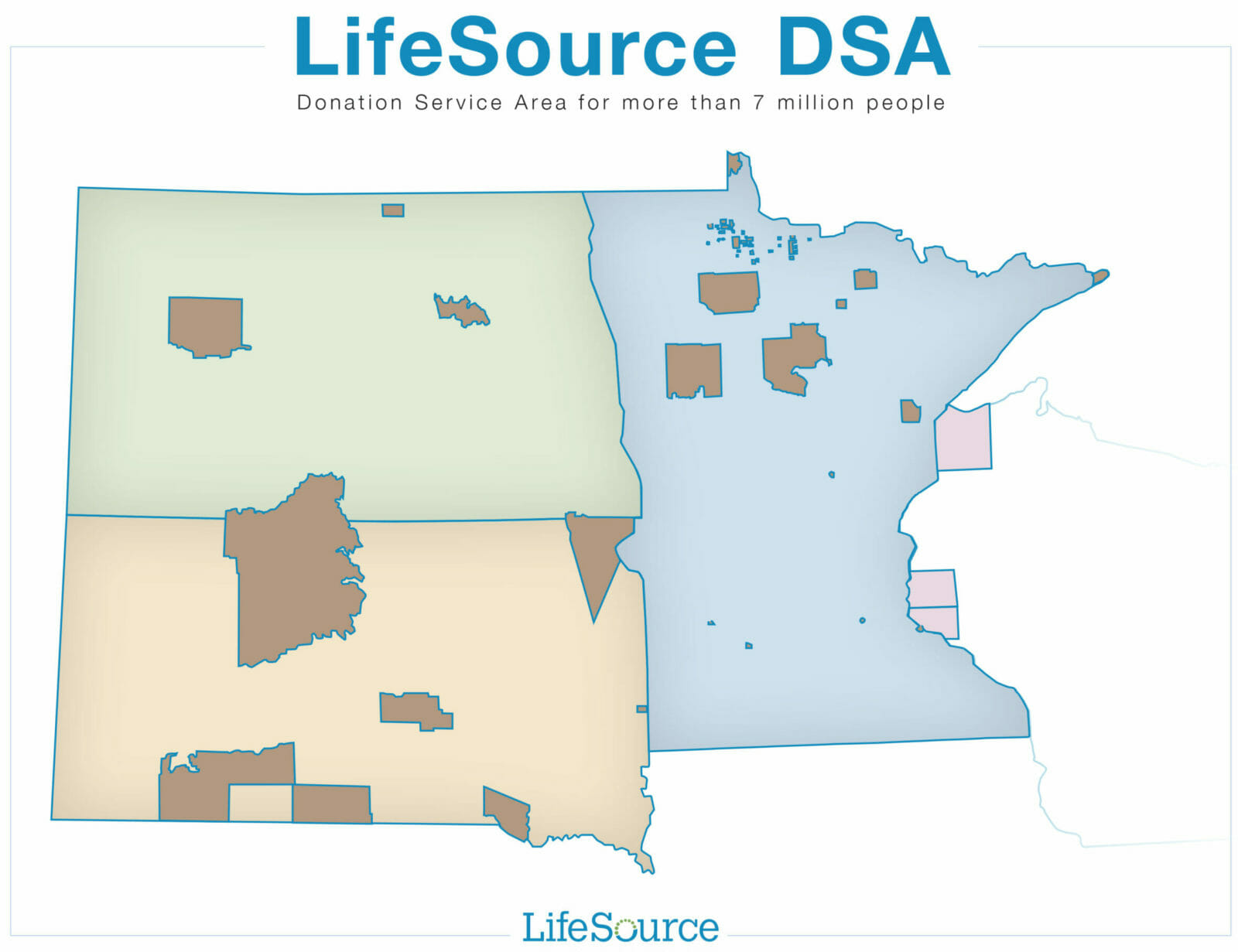Indigenous Land Acknowledgement
LifeSource extends respect to the 23 sovereign Indigenous Nations in our designated service area and acknowledge that the land on which the LifeSource Office stands in Minneapolis, Minnesota is the ancestral land of the Očhéthi Šakówiŋ (or Seven Council Fires) Dakhóta People, specifically the Wahpekute Nation. Our use of traditional Dakhóta land extends beyond Minneapolis, we also have facilities in Sioux Falls, South Dakota (Yankton Nation) and Rochester, Minnesota (Wahpeton Nation).
LifeSource is an organization deeply committed to its values. Our work is rooted in life, respect, advocacy, accountability, and innovation. We hold ourselves to a high standard because the people we serve deserve nothing less. It is only by embodying our values with inclusion that we will truly achieve our vision that Everyone Shares the Gift of Life.
With gratitude and respect, we acknowledge the contributions Indigenous people have made in all areas of life, and in particular their care and protection of this land. The upper Midwest holds sacred and personal meaning to these original stewards and their descendants. Despite systematic efforts to exterminate, displace, and erase the culture of Indigenous people, they have endured. It is our hope that this acknowledgement is one step towards reconciliation and changing the culture of colonization that still exists, and ultimately LifeSource will better serve the Indigenous community.
The Dakhóta people inhabited much of our region since at least 1000 A.D., including but not limited to the southern half of Minnesota, eastern South Dakota to the Missouri River, and a large section of North Dakota. The spiritual center of their territories was BDote, the place where the Mississippi and Minnesota Rivers come together. The Lakhóta people lived west of the Missouri River in North and South Dakota. Also populating the banks of the Missouri River were the Sahnish people. Beginning in the mid-1700’s, the Anishinaabeg people (also known as Ojibwe) had migrated around the Great Lakes to the northern half of Minnesota and northeastern North Dakota. Additionally, the Ho-Chunk, Cheyenne, Ioway, Cree, and Assiniboine people inhabited parts of our region at various times in history. Now their descendants have been fragmented into 23 federally recognized sovereign Indigenous Nations scattered across the upper Midwest: Zagaakwaandagowininiwag (Bois Fort Band of Chippewa), Cheyenne River Lakota Nation, Kȟaŋğí Wakpá Oyáŋke (Crow Creek Sioux Tribe), Flandreau Santee Sioux Tribe, Nahgahchiwanong (Fond du Lac Band of Lake Superior Chippewa), Gichi Onigaming (Grand Portage Band of Chippewa), Gaa-zagaskwaajimekaag (Leech Lake Band of Ojibwe), Kul Wicasa Oyate (Lower Brule Sioux Tribe), Cansa’yapi (Lower Sioux Indian Community), Mandan, Hidatsa & Arikara Nation (Sahnish), Misi-zaaga’iganiing (Mille Lacs Band of Ojibwe), Oglala Lakhóta (Oglala Sioux Tribe), Tinta Wita (Prairie Island Indian Community), Miskwaagamiiwi-Zaaga’igan (Red Lake Nation), Sicangu Oyate (Rosebud Sioux Tribe), Shakopee Mdewakanton Sioux (Dakota) Community, Sisseton Wahpeton Oyate (Lake Traverse Reservation), Spirit Lake Tribe, Standing Rock Sioux Tribe, Mikinaakwajiw Ininiwag (Turtle Mountain Band of Chippewa), Pezihutazizi Oyate (Upper Sioux Community), Gaa-Waabaabiganikaag (White Earth Nation), Ihanktonwan Oyate (Yankton Sioux Tribe).

The Native-Land Digital map has been a resource for our team to learn about and think about the land we work on, live on and utilize.
 Skip to main content
Skip to main content
